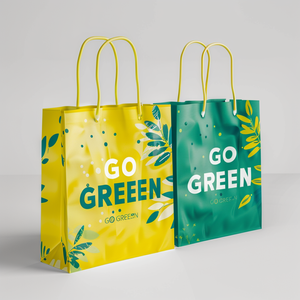How to Use Packaging to Boost Eco-Friendly Branding Efforts?
In today's environmentally conscious marketplace, consumers are increasingly prioritizing sustainability. Businesses aiming to capture this eco-aware demographic must integrate green practices into their operations. One of the most impactful ways to do this is through eco-friendly packaging. Here's how you can use sustainable packaging to enhance your brand's eco-friendly image and connect with eco-conscious consumers.
1. Choose Sustainable Materials
The first step in eco-friendly packaging is selecting sustainable materials. Consider using:
- Recycled Materials: These can be derived from post-consumer or post-industrial waste. Paper, cardboard, and some plastics can be recycled multiple times, reducing the need for virgin resources.
- Biodegradable or Compostable Materials: Materials such as cornstarch-based plastics or bamboo are biodegradable, breaking down naturally without harming the environment.
- Plant-Based Plastics: PLA (polylactic acid) is derived from renewable resources like corn starch or sugarcane and can be a greener alternative to traditional petroleum-based plastics.
2. Minimize Packaging Waste
Less is more when it comes to eco-friendly packaging. Reducing the amount of material used can significantly decrease waste. Implement strategies like:
- Right-Sizing: Tailor your packaging to fit the product perfectly, eliminating excess material.
- Simplifying Design: Use minimalist design principles that require fewer materials without compromising functionality.
- Multi-Use Packaging: Design packaging that can be repurposed or reused by the consumer, extending its lifecycle.
3. Embrace Innovative Packaging Solutions
Innovation in packaging can set your brand apart and highlight your commitment to sustainability. Some innovative ideas include:
- Edible Packaging: For certain food products, edible packaging made from ingredients like seaweed or rice paper can reduce waste entirely.
- Seed-Embedded Packaging: Packaging embedded with seeds can be planted after use, contributing to reforestation or urban greening efforts.
- Water-Soluble Packaging: Some products, particularly in the personal care industry, can benefit from packaging that dissolves in water, leaving no waste behind.
4. Communicate Your Eco-Friendly Efforts
Transparency and communication are key to leveraging eco-friendly packaging as a branding tool. Make sure your customers are aware of your sustainability efforts by:
- Labeling and Certifications: Clearly label your packaging with eco-friendly certifications (e.g., FSC, USDA Organic, etc.). This builds trust and credibility.
- Storytelling: Use your packaging as a canvas to tell the story of your brand’s sustainability journey. Highlight the materials used, the sourcing process, and the positive impact on the environment.
- Digital Engagement: Create QR codes or links on your packaging that lead to detailed information online about your sustainability practices and the lifecycle of the packaging.
5. Engage with Consumers
Consumer engagement is crucial for reinforcing your brand’s eco-friendly image. Encourage your customers to participate in your sustainability efforts by:
- Incentivizing Recycling: Offer discounts or rewards for customers who return packaging for recycling or participate in take-back programs.
- Educational Campaigns: Provide tips and information on how to dispose of packaging responsibly, both on your packaging and through your digital channels. At Duropack Limited, we always encourage brand owners to advocate recycling for a cleaner and a greener tomorrow..
- Community Involvement: Support local environmental initiatives and involve your customers in these efforts, creating a community around your brand’s eco-friendly values.
6. Continuous Improvement
Sustainability is an ongoing process. Regularly review and improve your packaging practices to stay ahead of environmental regulations and consumer expectations. Conduct lifecycle assessments to measure the environmental impact of your packaging and explore new materials and technologies that can further reduce your footprint.
Conclusion
Eco-friendly packaging is not just a trend but a powerful strategy to strengthen your brand's reputation and appeal to the growing number of eco-conscious consumers. By choosing sustainable materials, minimizing waste, embracing innovation, communicating transparently, engaging with consumers, and committing to continuous improvement, you can effectively use packaging to boost your eco-friendly branding efforts. This not only contributes to a healthier planet but also fosters loyalty and trust among your customers, driving long-term success for your brand. Today there are many ways through which a brand advocates sustainability.


Comments